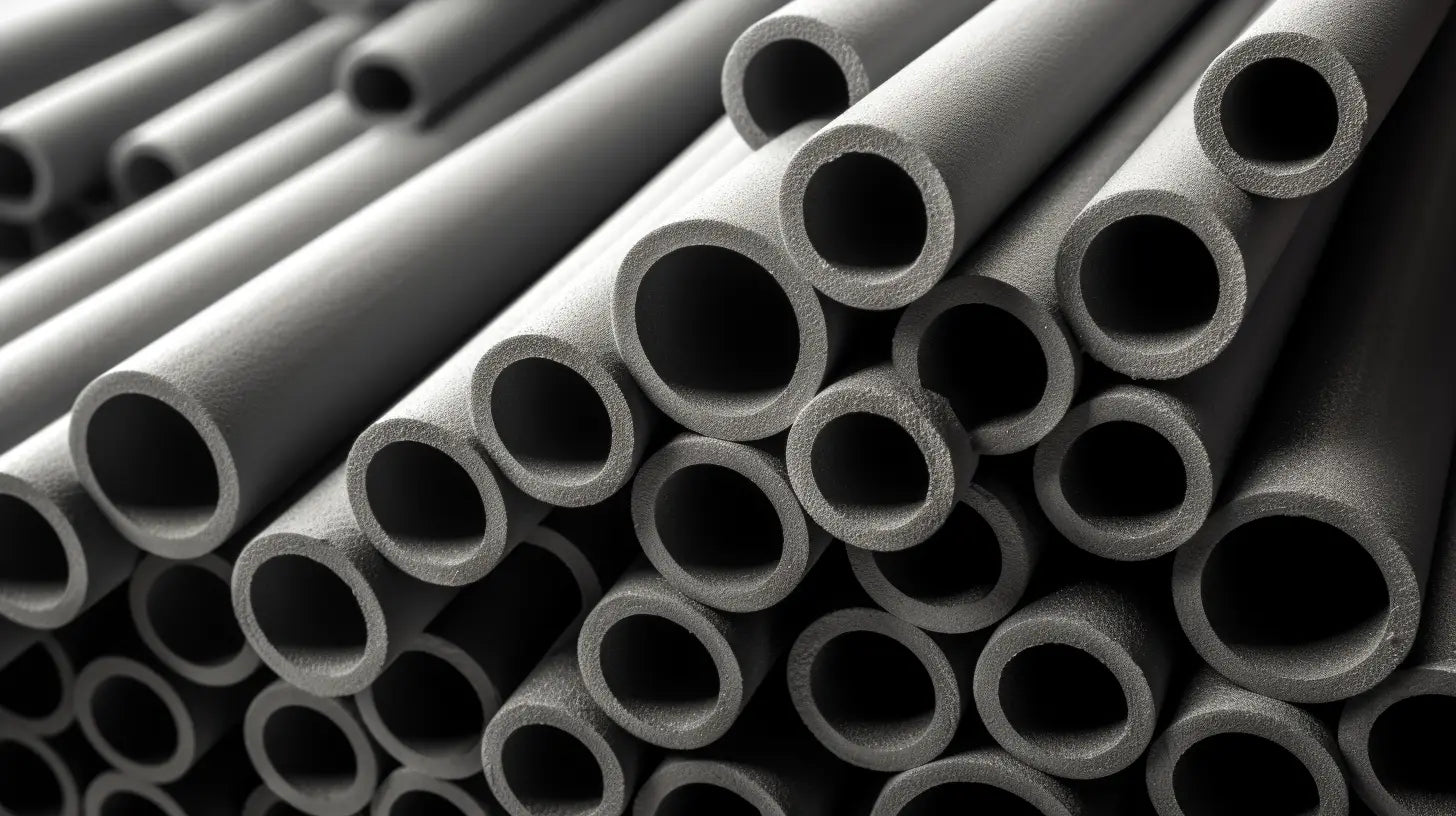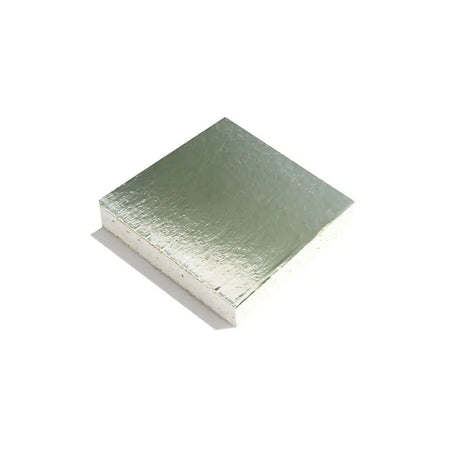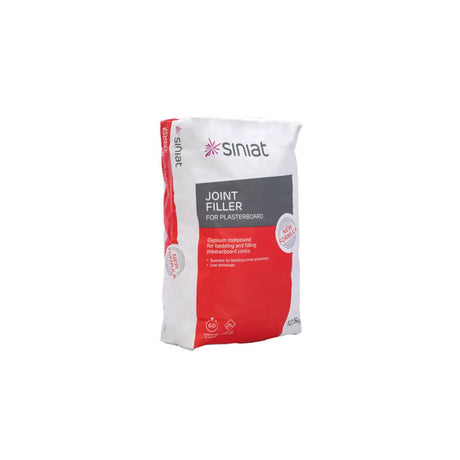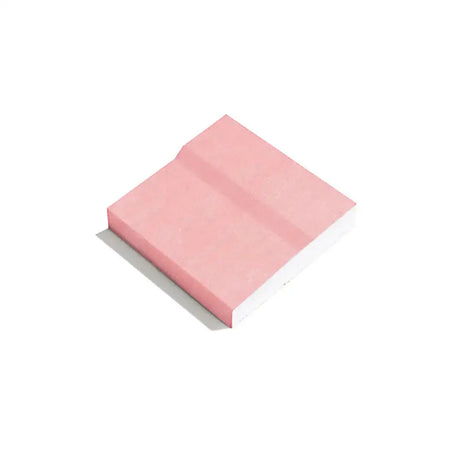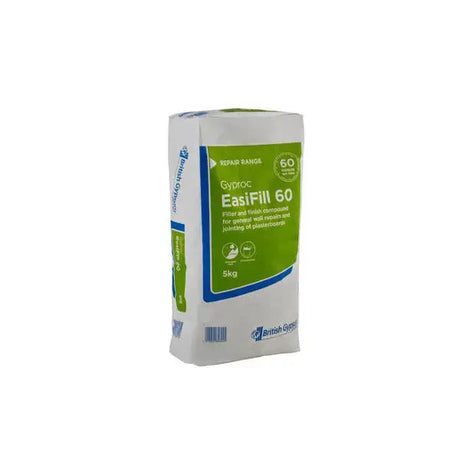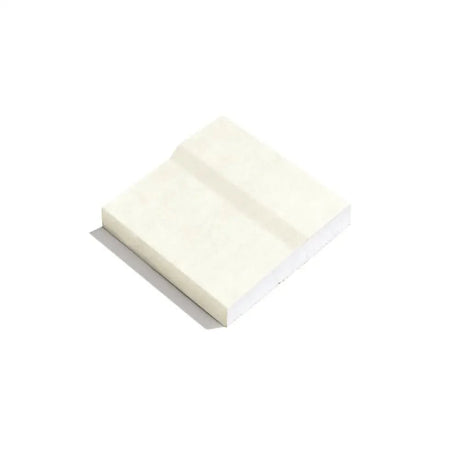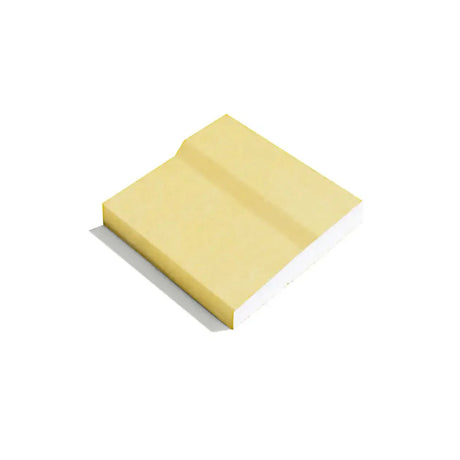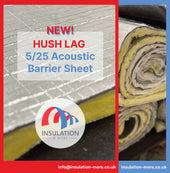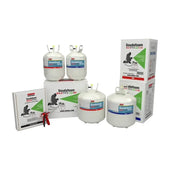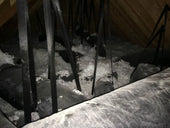| Section | Summary |
|---|---|
| What is Foam Pipe Insulation | Protective material to wrap pipes, reduce heat loss/gain, prevent freezing, dampen noise. Used in many applications due to versatility, affordability, effectiveness. |
| What is it Made of | Made from synthetic polymeric foams like polyethylene, elastomeric rubber, polyurethane. Raw materials expanded into foam tubes/sheets. |
| How it Works | Creates a thermal barrier by trapping air. Restricts heat flow. Closed-cell foams work best. |
| Effectiveness | Depends on insulation material, thickness, proper installation, temperature range. Can reduce heat loss by 80%+. |
| Benefits | Energy efficiency, freeze protection, condensation control, noise reduction, safety, aesthetics. |
| Indoor vs Outdoor | Indoor emphasizes cost, condensation resistance, noise reduction. Outdoor focuses on weatherproofing. |
| Comparing Materials | Covers properties of polyethylene, elastomeric, polyurethane, polystyrene, phenolic foams, mineral wool, fiberglass, calcium silicate, aerogel, microcellular foam. Allows selection of optimal material. |
| Installation Guidelines | Measure precisely, clean pipes, seal seams completely, secure ends, install protective jackets, inspect regularly. |
| Insulating Piping Systems | Provides examples of insulating plumbing, heating, refrigerant, industrial, chilled water, and solar piping. |
| Conclusion | Foam pipe insulation provides an effective solution for energy efficiency and system protection in many applications. |
In the vast world of insulation, various types of materials are used to protect and maintain the functionality of pipes, each with its unique properties. One of the most common and effective is foam pipe insulation. In this comprehensive guide, we’ll delve into all the details of foam pipe insulation, including what it is, what it’s made of, how it works, its effectiveness, benefits, proper installation, and considerations for different applications.
What Is Foam Pipe Insulation?
Foam pipe insulation is a protective material used to wrap around pipes to reduce heat loss or gain, protect them from freezing, condensation, and damage, as well as dampen noise caused by vibration. It is widely used in various applications, such as in commercial buildings, residential homes, and industrial facilities, owing to its versatility, affordability, and effectiveness.
Foam pipe insulation comes in a variety of sizes, shapes, and thicknesses to accommodate different pipe diameters. It is typically sold in long tubes that can be cut to the desired length. Split tubes are also available, which can be opened and wrapped around existing pipes without having to disconnect them. Pre-slit designs make installation easy.
What is Foam Pipe Insulation Made Of?
Foam pipe insulation is typically made from synthetic polymeric materials expanded into foam. Common materials used include:
-
Polyethylene - Polyethylene foam is flexible, lightweight, and cost-effective. It provides good insulation against both cold and heat. Kaifoam is a popular brand of polyethylene foam pipe insulation.
-
Elastomeric foam - Made from synthetic rubber, elastomeric foam is flexible and has a spongy texture. It excels at stopping moisture penetration. Armaflex is a well-known elastomeric pipe insulation.
-
Polyurethane - Polyurethane foams offer excellent thermal insulation and structural rigidity. However, they can be vulnerable to moisture issues.
-
Polystyrene - Expanded and extruded polystyrene foams deliver superb insulation against cold. But they perform poorly against heat gain.
-
Phenolic foam - Phenolic insulation combines great thermal performance with natural fire resistance. However, it is more expensive.
The raw polymeric materials are expanded into foam through manufacturing processes like extrusion or molding. They are then fabricated into flexible tubes or sheets used for pipe insulation.
How Does Foam Pipe Insulation Work?
The foam pipe insulation works by creating a barrier between the pipe and the surrounding environment. This barrier slows down the rate of thermal transfer, reducing the amount of heat loss in winter and preventing overheating in summer.
The closed air pockets within the insulating foam restrict the flow of heat. The more dense and closed-cell the foam, the better its insulating performance. Polyurethane and phenolic foams with tiny closed cells offer excellent thermal resistance.
For cold insulation, the thickness of the foam also matters - thicker insulation provides better resistance to heat flow. For example, 1" of foam may be suitable for chilling applications while 4" would be used for cryogenic insulation.
Foam pipe insulation is also used to prevent condensation, which can lead to damaging effects such as corrosion or mold growth. By keeping the surface temperature of the pipe above the dew point of the surrounding air, foam insulation can effectively prevent condensation.
How Effective is Foam Pipe Insulation?
The effectiveness of foam pipe insulation depends on several factors:
-
Insulation Material - The type of foam used affects thermal conductivity, moisture resistance, and temperature range. For example, elastomeric Armaflex (k=0.036 W/mK) provides superior insulation to polyethylene foam (k=0.033-0.040 W/mK).
-
Thickness - The thicker the insulation, the better its insulating value. Doubling thickness can cut heat loss in half.
-
Proper Installation - Snug fit without gaps, sealing seams and joints, and protection from physical damage improves performance.
-
Temperature Range - Certain foams work better for cold vs. hot conditions. Polystyrene excels for cold while polyurethane is better for hot.
-
Maintenance - Regular inspection and replacing damaged sections maintains insulation integrity.
With the right foam insulation material, sufficient thickness, and proper installation, foam pipe insulation can:
- Reduce heat loss by up to 80%
- Decrease energy costs by 10-20%
- Lower surface temperatures by 15-20°F
- Eliminate condensation in most environments
- Cut noise levels by 10-15 decibels
This makes it an extremely effective solution for most piping applications.
Benefits of Using Foam Pipe Insulation
Using foam pipe insulation offers many benefits:
Energy Efficiency
By reducing unwanted heat loss or gain, foam pipe insulation enhances energy efficiency, lowering energy costs. It prevents the waste of heated or cooled air and liquids. In some cases, the energy savings can result in the insulation paying for itself within a few years.
Freeze Protection
In cold climates, foam pipe insulation helps prevent pipes from freezing. This avoids major pipe bursts and water damage, especially in unheated indoor areas like attics and basements. It allows pipes to operate safely in low temperature environments.
Condensation Control
Insulation keeps pipe surfaces warmer to stop condensation, preventing corrosion, mold growth, and drips that can damage property. This helps maintain air quality and system longevity.
Noise Reduction
Dense insulating foam helps dampen noise from mechanical systems and water flow in plumbing systems. This reduces disruptive vibrations and noises, creating more comfortable environments.
Safety
Insulated pipes stay warmer or cooler to the touch, reducing burn risk. Insulation also limits flammability and heat stress hazards for plant workers.
Aesthetics
Insulated pipes and ductwork have a neat, tidy appearance. Insulation can be painted or provided with a decorative exterior jacket to match building interiors.
Indoor vs. Outdoor Pipe Insulation
Special considerations exist when insulating indoor versus outdoor pipes:
Indoor Insulation
-
Ease of installation and lower cost are priorities in accessible indoor environments. Polyethylene foams like Kaifoam are economical indoor insulators.
-
Condensation resistance is needed in humid indoor areas like basements. Closed-cell foams like elastomeric rubber work well.
-
Noise control is often a concern with pipes installed in occupied spaces. Acoustical insulation helps absorb sound.
-
R-values of 3 to 6 are typical for indoor insulation thicknesses. Higher values used in unconditioned spaces.
Outdoor Insulation
-
UV and weather resistance is crucial for outdoor pipes. Rubber, EPDM, and PVC insulation withstand the elements.
-
Polyurethane, phenolic, and mineral wool have natural water resistance. Aluminum or PVC jackets add outdoor protection.
-
Preventing heat gain is a priority for cold lines like chilled water. Reflective insulation improves performance.
-
Freeze protection is critical for pipes with liquid. Thicker insulation of 2"+ used in colder climates.
-
Vapor retarders prevent moist interior air from damaging insulation. All seams must be sealed.
-
R-values of 6 to 8+ help counteract severe outdoor conditions.
With proper selection for indoor vs. outdoor needs, foam pipe insulation effectively protects piping in all environments.
Comparing Popular Pipe Insulation Materials
Many types of insulation materials are available for piping beyond just foam. Here we compare the key characteristics and benefits of common options:
| Material | Description | Key Benefits |
|---|---|---|
| Polyethylene Foam | Flexible, closed-cell polyethylene foam. Lowest cost option. | Low cost, easy installation, good condensation resistance |
| Elastomeric Foam | Made from synthetic rubber. Has a spongy, flexible texture. | Excellent flexibility, insulation, and moisture resistance |
| Polyurethane Foam | Rigid or flexible plastic foam with tiny closed cells. Polyisocyanurate is a type of polyurethane with added foil facing. | Superb R-value even at thin widths, good fire resistance |
| Polystyrene Foam | Rigid plastic foam manufactured in expanded (EPS) or extruded (XPS) versions. | Excellent insulation against cold, good compression strength |
| Phenolic Foam | Rigid plastic foam with very small closed cells. Offers thermal performance similar to polyurethane. | High R-value, fire/moisture resistance, mechanical strength |
| Mineral Wool | Fiber insulation made from natural materials like rock, slag, or glass spun into a fiber-like structure. Available as blankets/boards or pipe wraps. | Fire resistance, sound absorption, withstands high temperatures |
| Fiberglass | Glass fibers spun into an insulating wool-like material. Available as duct wrap, preformed pipe insulation, and flexible blankets. | Good acoustic performance, fire resistance |
| Calcium Silicate | Rigid insulation containing calcium silicate hydrate. Can withstand very high temperatures. | Fireproof, handles temperatures up to 1200°F, low thermal conductivity |
| Aerogel | A very porous ultra-light material derived from gel in which the liquid component is replaced with air. | Extremely low thermal conductivity, best for cryogenic insulation |
| Microcellular Foam | Polymer foam with very small cell sizes, created through a specialized manufacturing process. | Provides similar insulation to traditional foam with less material |
There are also composite pipe insulations which combine different materials to optimize properties. For example, Armacell's Armaflex Ultima couples a fiberglass core with a waterproof closed-cell elastomeric foam exterior.
Reviewing the characteristics of each material allows selection of the optimal insulation for any piping application.
Key Considerations for Installation
Properly installing pipe insulation is crucial for it to deliver its expected performance and benefits. Here are some key guidelines:
-
Measure carefully - The insulation must be sized correctly to snugly fit the pipe diameter. Measure pipe circumference and cut insulation tubes to length.
-
Clean pipes - Remove any oil, rust, or debris so insulation adheres directly to the pipe surface.
-
Seal seams - Longitudinal seams and butt joints at insulation segment ends must be sealed with adhesive to prevent gaps. Use vapor barrier mastic for a continuous seal.
-
Secure ends - Use tape or tie wire to hold insulation ends in place. Wrap insulation over pipe hangers and supports.
-
Install jackets - Outdoor pipes need weatherproof jackets made of aluminum, PVC, or UV-resistant rubberized bitumen.
-
Check frequently - Periodically inspect for gaps, cracks, or damage which compromise insulation performance and need repair.
Proper installation ensures insulation remains snug, intact, and undamaged in order to deliver maximum energy efficiency and pipe protection.
Insulation for Common Piping Systems
Here are some examples of using foam and other types of insulation for various piping systems:
-
Plumbing Pipes - Insulating water supply and drainage pipes prevents freezing and sweating. Flexible slip-on polyethylene tubes like Kaiflex are easy to install on plumbing.
-
Heating Pipes - Fiberglass and elastomeric rubber like Armaflex work well to insulate heating pipes up to 230°F. Ensures efficient heat distribution.
-
Refrigerant Lines - Closed-cell foams that resist moisture penetration are ideal for chilled lines. Armacell Tubolit split tubes make retrofit easy.
-
Industrial Process Pipes - Calcium silicate or high-temperature mineral wool insulate steam, oil, and chemical pipes from 500-1200°F.
-
Condensate Drains - Flexible acrylic-coated rubber tubes provide condensation control on drain pipes. Help prevent mold growth.
-
Chilled Water - Polyurethane or nitrile rubber insulates cooling lines from sweating and heat gain. Useful for AC systems.
-
Solar Piping - Fiberglass and rubber insulation withstand high stagnation temperatures on solar hot water pipes.
With the wide range of insulation products available, there are excellent options to insulate any piping system for maximum efficiency. Following proper selection and installation guidelines ensures getting the best performance.
Conclusion
From versatile polyethylene foam to highly efficient elastomeric rubber, foam pipe insulation provides an effective solution to reduce energy costs, prevent heat gain/loss, control condensation, and protect against freeze damage for all types of piping systems. With proper product selection, thickness, and professional installation, foam pipe insulation delivers significant performance and cost benefits in residential, commercial, and industrial applications. As energy costs continue to rise, foam insulation remains an economical way to improve energy efficiency and system longevity.
Frequently Asked Questions about Foam Pipe Insulation
What temperature ranges can foam pipe insulation withstand?
Most foam insulation like polyethylene and elastomeric can handle -29°C to 93°C (-20°F to 200°F). Specialty foams like phenolic and melamine withstand up to 149°C (300°F).
Can I use foam pipe insulation outdoors?
Yes, if protected from UV exposure and moisture with a PVC or aluminum jacket. Foams like rubber and polyurethane have natural weather resistance.
Does pipe insulation reduce sweating and dripping?
Yes, keeping surfaces warmer prevents condensation that causes sweating and dripping from cold water pipes.
How long does foam pipe insulation last?
Properly installed foam insulation lasts 10-20 years. Closed cell foams have better longevity than open cell. Regular inspection helps spot potential failure.
Can I install pipe insulation myself?
Yes, foam tubes are easy for DIY homeowners to install. Split tubes don't require removing pipes. Take care to seal seams completely.
Should I insulate hot or cold water pipes?
Insulating both hot and cold water pipes helps reduce energy loss and prevent sweating that causes mold.
Does pipe insulation reduce noise?
Absolutely. The dense foam dampens pipe vibrations and water flow noise. Effective noise reduction requires complete coverage with no gaps.
Can I paint pipe insulation?
Yes, you can paint most foam insulation for visual appeal. Use a water-based latex coating designed for plastics.
Is fiberglass better than foam pipe insulation?
Fiberglass has slightly better fire resistance but lower insulation value. Foam is more flexible, water-resistant, and easier to install.
Is there a flame-resistant foam pipe insulation?
Yes, foams like melamine, phenolic, and polyisocyanurate contain flame retardants and achieve fire ratings for safety.
Does pipe insulation contain VOCs or off-gassing?
Most foams off-gas minimally during installation. Look for low VOC brands or ventilate area during application.

